BecomeSingers is reader-supported. When you buy through links on our site, we may earn an affiliate commission. Learn More
Speaker cables make a humongous difference in the sound of your music. These cables are the backbone of your audio system, and choosing the right one is crucial. Yes! The quality of speaker cables and audio interference impacts your audio experiences. Therefore, it is essential to know all about a Coaxial speaker cable if you are thinking about purchasing one.
Don’t worry! Here is a complete guide about Coaxial speaker cables that will help you find whether it is worth your attention or not! Read on to find out.
Table of Contents
What Is A Coaxial Speaker Cable?
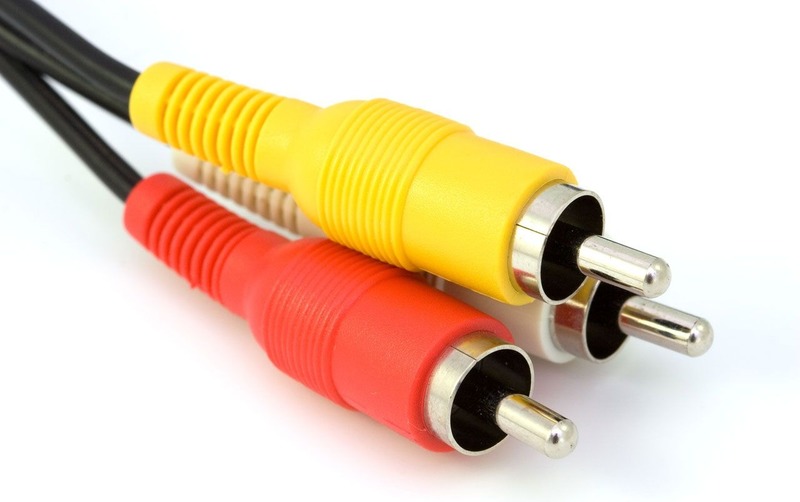
Coaxial speaker cables are signal transmission wires that can pass radio frequency signals between different electronic equipment with their coaxial cable speaker connector. These cables are generally used as transmission lines because they transfer signals at less loss.
Standard electrical cables were the only choice of buyers. However, a Coaxial speaker cable is a favorite of customers today as it can convey a frequency range of 20kHz to 300GHz. Users can also use Coaxial cables to connect satellite dishes, television sets, and radio antennas to their respective receivers. Users started to use this type of cable in 1858.
Components Of A Coaxial Speaker Cable
Coaxial speaker cable is built up of four different layers and therefore is highly reliable and durable. The speaker cable has a center conductor (a copper wire) that carries data and video. A non-conductive coating ( dielectric plastic insulator, which is a foam-like substance) is also there that protects its inner conductor.
The inner conductor remains safe within a cylindrical structure with additional shielding. This shielding is usually a braided mesh from copper then helps to shield the cable from electromagnetic interference (EMI)
There is also an outer coat made of plastic coating to reduce the possibility of injury to the signal transmitting components during setting or from environment-related pressures.
Pros And Cons Of Using Coaxial speaker Cable
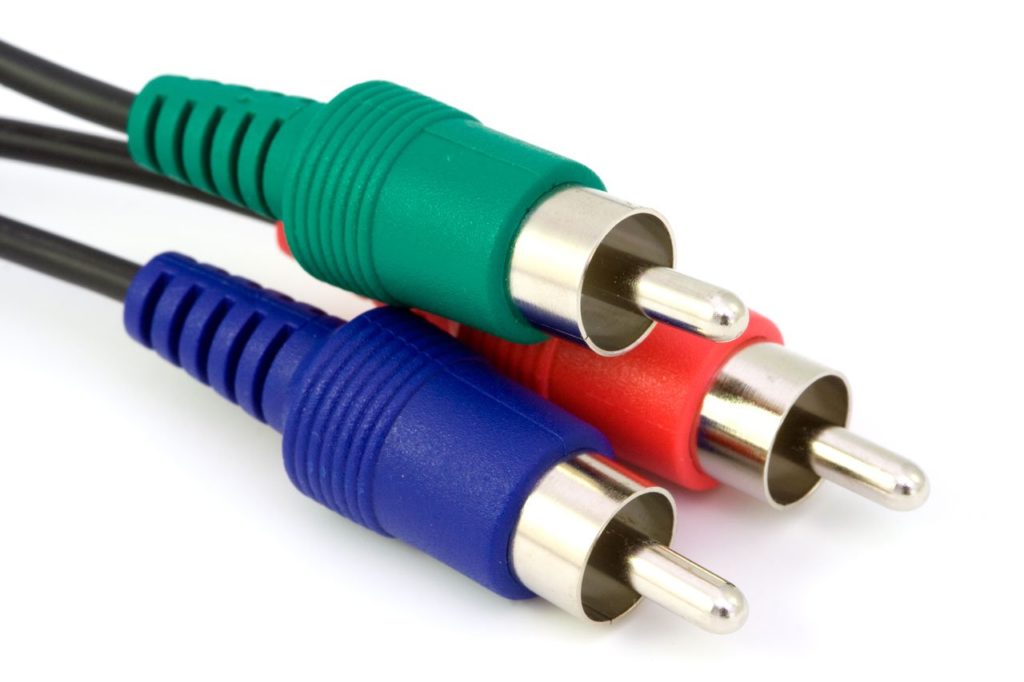
Most Coaxial and optic fiber types of cable are adept at carrying video, audio, and other forms of data. Besides, cable types have distinct advantages and disadvantages in setting up your network. However, is coaxial cable better than other cables? The answer relies on which cable is best for your situation, depending on the distance of your connection and the amount of data you will send.
Coaxial speaker cables are popular nowadays for radio broadcasts, telecommunications, Wi-Fi networks, cable modems, etc. However, the top reasons are as follows.
- These cables are less vulnerable to radiofrequency.
- They support applications with frequencies up to 50 MHz and higher.
- This cable has outstanding bandwidth transmission and transfer rates.
- Digital Coaxial cable is worth purchasing as they deliver optimal sound & video quality.
- The coaxial cables provide accurate transfer of the audio signals in digital format.
- These cables can transfer lossless audio output and are resistant to any interference (RFI or EMI).
- They are best for powering various appliances like subwoofer speakers, cable/satellite boxes, game consoles, DVRs, HDTVs, Blu-Ray/DVD players, etc.
- They provide high durability and reliable performance in short-distance transmission too!
- They are easy to install and work well in various environments.
- They provide outstanding sound quality, making it suitable for professional usage.
- If you are working on a home installation and want a medium-capacity data transfer network, sticking with a coax cable is best.
- A digital coaxial cable also comes at a reasonable price.
Are There Any Downsides To It?
Nothing is perfect! So coaxial speaker cables have a few drawbacks too.
- Coax cables are easy to install, durable, and less expensive than fiber cables. However, fiber cables have faster data transfer capacity and less risk of signal loss, making them best for professional networks.
- Audio signal transmission may produce annoying electrical noise.
- Signal loss can occur during long-distance transmission.
- Coaxial setups don’t support sound technologies like DTS-HD Master Audio.
- During heavy use, signal leakage can happen. In addition, the wire length often poses instability issues.
- It is costly to install for longer distances, and higher capacitance often results in instability concerns sometimes.
Types of Coaxial speaker cables
All coaxial cables are not the same. There are three types of coaxial cables on the market.
The first type depends on impedance.
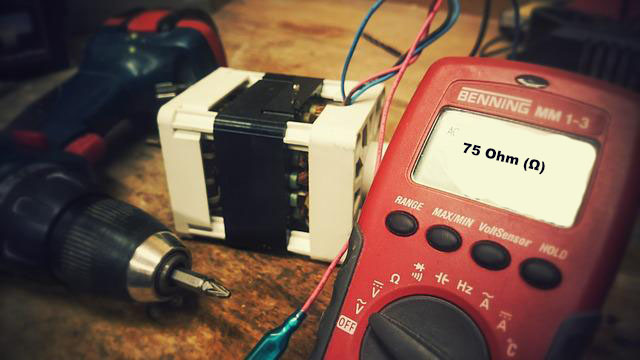
There are coaxial speaker cables with an impedance of 75 Ohm (Ω) and others with an impedance of 50 Ohm. While the coaxial cables with 75 Ohm are suited for transmitting video signals, customers use 50 Ohm cables for data and wireless communications.
Besides, coaxial cables come in different sizes, and each one has a unique signal transfer capacity.
Also Read: Best Wireless Microphones For Computer, PC & Laptop 2022
The second type depends on RG (Radio Guide standard).
RG standard helps to categorize a coaxial speaker cable. All Cable types have R and G letter marks with a number informing users about the outer diameter, core wire diameter, Impedance, Shielding, and Dielectric type of the cables. Check some examples below.
RG-6 cables
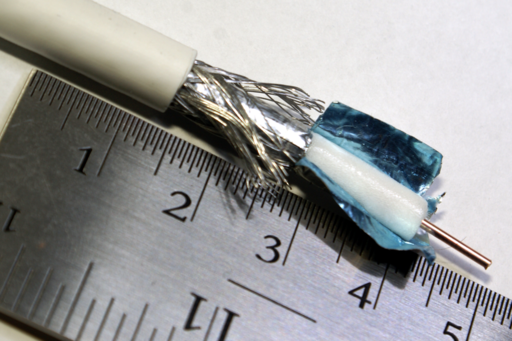
RG-6 cable can work with the GHz level signals more efficiently. It can run longer distances without audio or video signal loss and have thick dielectric insulation plus a gigantic conductor to provide a better quality signal.
RG-59 cable
RG-59 cable has a thinner center conductor than the RG-6 and is the best choice for short runs and low-frequency transmissions. It is most in domestic settings and great for CCTV systems.
RG-11 cable
RG-11 cable is the best coaxial cable for HDTV. It offers a higher gauge, which provides more space for signals to move. Thus, the RG-11 cable is an expert at transferring strong HD signals at high speed. It also offers a lower attenuation level than RG-6 or RG-59 cable, making it adept at carrying data at longer distances.
Types of Coaxial speaker cable based on construction
Following are the seven different types of coaxial speaker cables.

Hardline Coaxial Cable
Hardline coaxial cables are types of cables best for supreme and promising signal transmissions. This cable uses compressed nitrogen as a restriction agent to prevent arcing and moisture intrusion. Besides, manufacturers use materials, including copper, steel, silver, or aluminum, to make the center conductor of Hardline coaxial cable. Moreover, this type of cable is larger in diameter than other forms of coaxial cables.
Flexible Coaxial Cable
Flexible coaxial speaker cable, just as its name suggests, can move as desired to fit the network and functionality of the electronic devices. It is the most common type of coaxial cable, commonly used in home video equipment and television connections. The flexible coaxial wire has a metallic central conductor enclosed by an adjustable polymer, functioning as the insulator. It also has an outer coat, acting as a defense against environmental stresses.
The best thing is, when it is necessary to enhance flexibility, users can switch the metallic core conductor with a stranded structure from a durable wire. They can also change the insulator with a polyethylene non conducting foam for more flexibility.
Semi-rigid Coaxial Cable
After the initial forming operation, one cannot flex a Semi-rigid coaxial cable. However, with the help of special tools, users can bend them with their hands. It is crucial to remember that the outer non-ferrous copper layer of this cable is electrically stable. Therefore, can enjoy the dependable electrical performance and optimum phase stability with Semi-rigid coaxial cable.
Formable Coaxial Cable
Formable coaxial cable, typically known as the conformable coaxial cable, is the best substitute for the semi-rigid coaxial cable. This cable type has a flexible metal sheath in place of a copper covering outside. Therefore, one can reshape them by hand without any tools to meet the suitable cable configurations. They also offer electrical performance like other coaxial cables up to 18 GHz, and are best to use in satellites, antennas, etc.
Rigid Coaxial Cable
Rigid-line coaxial cables have mounted twin copper tubes, working as unbendable pipes. The outer surface of these cables is generally aluminum or copper. Further, these wires are best suited for indoor use between various high-power radio frequency (RF) transmitters. Moreover, these cables are costly to construct and users must keep them dry to avoid unnecessary leakage between the two copper tubes. One of the top reasons to use these cable types is their capacity to reduce radiation losses.
Twinaxial Cable
Twinaxial cables have two insulated copper conductors in their core rather than one. These Twinax cables are adept for use in low-frequency digital and video applications. Some perks of using twin axial cable include lessening low-frequency magnetic noise, decreased cable loss, and a cost-effective alternative to conventional fiber cables.
Triaxial Cable
Triaxial cable or Triax wire has Copper Zirconium alloy inner covering and comes with an extra copper plait. This braid works as a defense against any outside current or noises. Therefore, this cable provides interference rejection and bandwidth increase. Besides, these cables are popular as they offer high frequency, are best-suited for a wide range of signals, and have top insulation resistance to reduce signals too!
Coaxial Speaker Cable Connectors
Below are some coaxial speaker cable connectors You Can Use With A Coaxial Speaker Cable.
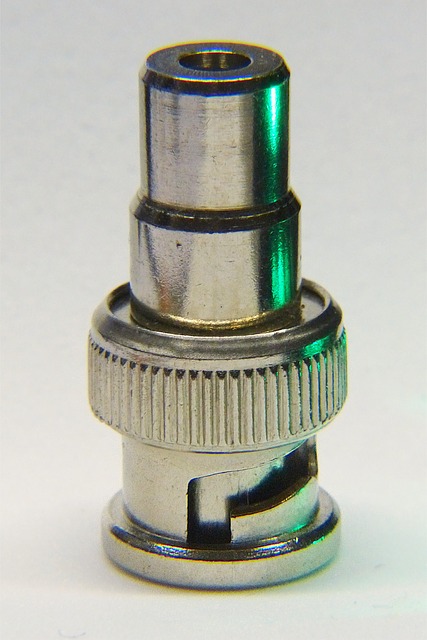
- BNC– BNC (Bayonet Neil-Concelman) connectors are suited for radios, televisions, testing instruments, and radiofrequency equipment. They are designed for wide-range frequencies from 10 GHz up to 4GHz.
- N-Type– N-type connectors deliver a good result for the lower spectrum of microwave frequencies ranging around 18 GHz. Most customers use this type of connector with communications and broadcast equipment.
- SMA-SMA connectors today can work with frequencies ranging from 0 Hz to 24 GHz. These connectors work best with hand-held radio antennas, Wi-Fi antennas, mobile telephone antennas, microwave systems, etc.
- SMA and BNC coaxial cables (F-Type)- A F-type coaxial cable speaker connector can handle frequencies up to 1GHz and are best for TVs and antennas.
- MCX– Micro coaxial connectors are designed as an ideal pair with antennas and are best for small spaces. This connector can often be optimal for TV tuner cards, GPS, RF hardware, and digital cellular applications.
- TNC– The Threaded Neil-Concelman (TNC) comes as a threaded version and works best with microwave frequencies and RF/antenna connections. They are weather-proof and can operate up to 12GHz.
- 7/16 DIN– The 7/16 DIN connector’s name comes from its size- the 7-mm inner diameter and the 16-mm inner diameter of the outer contact. This coaxial cable speaker connector is a threaded RF connector for high-wattage transmissions. Plus, it is excellent for use in cellular networks and defense applications. It supports frequencies up to 7.5 GHz and works well with antenna systems with multiple transmitters.
Can you use a Coaxial cable as a speaker cable?
Yes! You can use a coaxial cable as a speaker cable. However, it would be best to replace the connectors to use the coaxial cable as a speaker wire. It would help if you replaced the standard F-connectors with RCA connectors first to make them work suitably with your speakers.
Besides, here are some tips you must keep in mind to choose a digital coaxial cable if you want to use it in your home studio.
- Think about applications ( why do you need a coaxial cable?) — Thinking about how you will use your coaxial cable is crucial before you buy one. Remember, each type of cable is well-suited for specific applications. Therefore, decide if your application will require short-range, long-range transmission, high or low frequencies before purchasing a coaxial cable.
- Impedance ( Are you looking for 50 Ohm or cables with 75 Ohm?)— Impedance is nothing but an electrical circuit’s resistance to alternating currents expressed in ohms. So, you must buy a coaxial cable with an impedance that matches all components of a coaxial cable system to get rid of echoes, ghosting television images, and signal attenuation.
- Environment ( Resistance to environmental factors) — If you want to install the coaxial cable underground, consider installing it with waterproof pipes to protect it from corrosive vapors or moisture. Thankfully, some manufacturers use hardened polyethylene cables with steel and silver coatings to make coaxial cables that are super resistant to environmental stresses.
- Working voltage and power rating is also a vital factor — The voltage of a coaxial cable travels through the center conductor. Check the maximum or “peak” voltage capacity of the coaxial cable and make sure it is not too high as a safety precaution.
- Signal loss at different frequencies — Some coaxial cables are susceptible to signal loss at very high frequencies (VHF). So check if the manufacturers provide a foil or braided shield for VHF and UHF interference protection before buying a coaxial cable.
- Pick the right Connector Type- There are different coaxial cable speaker connectors you can use with the coaxial cable mentioned above. While F-type connectors usually are best for connecting TVs, other connectors are also best for other devices. So make sure to check the connections that your device can accept before buying a coaxial connector.
- HDTV Support- If you want to use a coaxial cable for your HDTV, you must get a top-quality coaxial cable. Best coaxial speaker cables are not affected by interference and signal loss.
How to turn coaxial into a speaker cable and connector
Check out the steps below to convert your coaxial cable into a speaker cable.
First, remove the Coaxial cable connector.
Coaxial cables have dual connectors for transferring audio/video signals. To connect your speakers with a coaxial cable, you have to remove the coaxial connectors on each side of the coax cable at the beginning. You can use a knife to cut off the connectors.
Measure the length of the Coaxial wire
You can buy a coaxial cable with lengths of over 50 feet and beyond. Therefore, cut down the coax cable according to your requirement depending on your home theater layout.
Strip off the Coax Insulation next
You can use a sharp knife to strip away the insulation coating from the coax cable. Try to pull off the jacket without damaging the electric wire.
Unravel the Shielding and remove the insulator
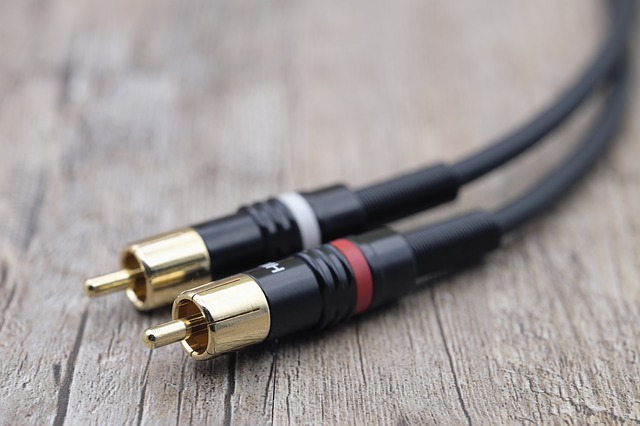
After removing the insulation coating, unbraid the shielding to take out the copper wire. Remember to remove the translucent insulation layer carefully without damaging the copper wire.
You are all done! You will have to use this copper wire to connect with your speakers now! Besides, if you are not confident about converting your coaxial cable to a speaker cable, many coaxial speaker cables are available!
Coaxial speaker cables like AmazonBasics Digital Audio RCA Compatible coaxial speaker cable is one of the best for conveying excellent audio quality. This cable has durable construction and promises zero noise or signal loss as it shields against EM/RF interference.
Moreover, you can use it with RCA-compatible digital audio components and composite video interfaces. It ensures no breakage in connections. The RCA connectors also come with gold plating and split-tip center pins that offer superior contact pressure and high conductivity. Additionally, it is easy to install, has a flexible and durable exterior, is four feet cable length, and guarantees longevity. So this digital coaxial cable is worth it to have a place in your home studio.
Bottom Line
Lastly, many music lovers think a coaxial cable is not better than an HDMI connector. So, HDMI remains their first choice for transmitting audio signals. The reason behind this is HDMI supports all types of audio signals and can send both audio plus video over a single cable.
However, a coaxial audio connection is a great way to transfer sound from one device to another if you don’t have an HDMI cable. Yes! You can listen to both surround and stereo sound with this coaxial connection. Moreover, a coax output cable serves you well in transferring audio from a multiple channel source like a computer or DVD player.
So, It is clear that a Coaxial speaker cable can carry high-frequency signals with minimal distortion and offer more detail and dynamic range in terms of audio quality. Besides, you must be pleased to know that these cables can handle the high bandwidth and can be cabled to many devices simultaneously! So why not give it a try! To know more about home studio equipment and sound systems, visit our site.





